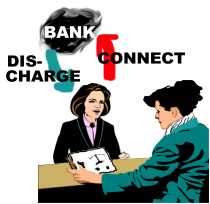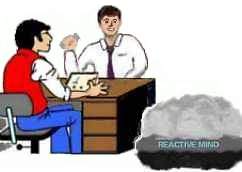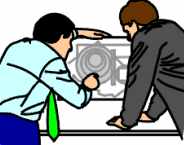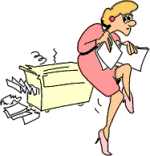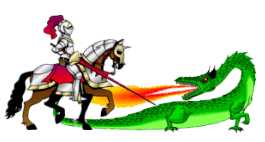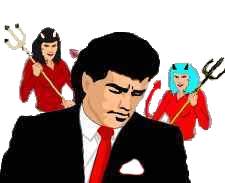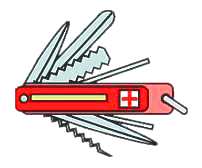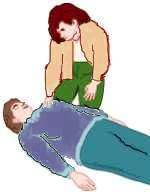Assists |
||
|
The simple techniques of Assists, that are covered in this chapter, can serve the student auditor well in explaining what auditing is all about and to do demonstrations with. It does not use the Meter or the formal setting of a session, but can be very effective when done right. It also provides the beginning auditor with a simple procedure that will get him familiar with handling a pc. Assist are meant as a mental first aid, when the pc is in a state of chock or pain after an accident happened (contact assist), as a relief from a confusion (locational assist) or psychosomatic tension (touch assist). They reduce the unconsciousness produced by the chock of the accident and they help to undo the non-survival postulates made during it. They work extremely well on children. The child is made aware of what happened and made to confront the accident and pain and will usually cheer up very quickly without developing a pattern of misbehavior. They will quickly clear up the mishap and gradually become more responsible if Assists are applied to them on a regular basis. A good comm cycle (TR's) and good control of the pc are the primary skills required. Find more Assists and Objective Processes at this Web AddressTouch AssistIs used to relieve chronic or acute aches and pains, like headaches, bumps and bruises. It also relieves body stress and mental stress of illnesses, like colds and fevers, etc. It does of course not replace medical attention or medical first aid, but helps the patient deal with the condition and recover from it faster. Any assist is only administered after a medical first aid is given, if needed. Commands"Feel my finger." "Thank you."The communication cycle is not as important in the touch assist, but it must be present. You do give the command, get an answer from the patient and acknowledge each time. This is done alternating from one side of the body to the other, one command and answer and acknowledgement for each touch. The auditor works his way up and down the body from toes, all the way up to fingers and to the top of the head and back down. In case the assist is for an injury you would work around that area during the assist. But as described below, you want to 'loosen up' locked up energy and will thus have to work the whole body. It's important to cover the area further away from the head than the injury. If the knee is injured you should give the lower leg and feet special attention. DescriptionOne of the factors of an assist is a balance of the nerve energy of the body. There are 12 nerve channels going up and down along the spine. The energy from a shock will make a standing wave in the body along these channels.The brain is a shock cushion, that is all. It absorbs the shock from a large amount of energy. The connection between the single nerve cells is a 'fuse'. It blocks or disconnects under stress. A wave one way will have a wave reacting the other way. In the sympathetic nerve system, the chock wave from the injury locks up on both sides of the body. So you need to do the assist thoroughly on both sides of the body. Work over both sides and unlock the standing wave. The purpose of a touch assist is to unlock the standing waves that are small electronic ridges of nerve energy that are not flowing as they should. At first, you might just get an awareness of the area. Then maybe, after the third or fourth assist (third or fourth day or many more days with one done each day), there is a large jolt that will go through. The impulse tends to lock up in the spine so you have to do the spine, too. End Point: Pain gone, realization. It may take several assists to achieve this. Cautions: Both sides of the body must be worked and balanced. If you touch the right elbow, it is followed by touching the left elbow in the same place, etc. You must go to the extremities (feet and toes, hands and fingertips) beyond the area of injury. Avoid setting up a rhythm, as you don't want to mesmerize the person. Also, depending of the character of the injury, you may have to do one Assist each day for many days before you reach the full EP of the Assist. End off each session at a good point until full EP is reached.
Put your Attention on my HandDescriptionThis process can be used as an emergency assist. Let's say that you were a public school playground supervisor and a child falls down and wrenches his ankle. You get to the child; you want a minimum of talk in the vicinity always. You just ask the child, "Put your attention on my hand," and you put your hand below that ankle (in other words, on his heel, his shoe, his toes and so forth), "Thank you".Maybe the child is writhing around in pain but he will at least try to do it. You will feel the limb tremble, you will feel the tremor abate, you will feel it cut-in again and then get quiet and for several placements no particular result. And then, you will feel the tremble and you will feel it abate except that the tremble each time will be less. The person will actually feel the impact over again that caused the injury. The child will (if you do this well for about ten, fifteen minutes) quite ordinarily simply get up and walk without a limp and no difficulty.
CommandsFirst, tell the person what you are going to do. Let him know that you want him to give you a signal every time he has put his attention on your hand. "Put your attention on my hand." (Move your hand, before giving the command). "Thank you.""Put your attention on my hand." "Thank you." "Put your attention on my hand." "Good." "put your attention on my hand." "Okay." etc. to End Point. End Point: Pain gone, a realization, and good indicators. Cautions: None
Assist to Make a Person SoberDescriptionThis assist is not used to cure a person of alcoholism. The use of locational havingness will make a drunk person sober in a very few minutes and the cause of his need for alcohol can be audited out later. As society currently has no technology for handling the drunk who is an embarrassment to the police, his family, and often to himself, this process has social value and may serve as a line of cooperation and assistance to the police.Commands"Look at that ____(room object)."Use very good presence (TR 0). A drunk is usually considered somewhat unconfrontable and he himself certainly cannot confront. Repeat the command, each time pointing out a room object, as often as required to bring the person to sobriety. Do not veer off the process (Q&A) with the frequent comment "What object!" Just get the command carried out, acknowledge, and give the next command. End Point: The person returned to being sober. Cautions: Do not ever get angry with or strike a drunk, whatever the provocation.
Locating the Accident or InjuryDescriptionOf course, one does not open and close a session with any formality while doing an assist. The person is always too tied up with the emergency to do anything but the process. This is the best assist for a child, getting him to point each time he answers the question.Commands"Where did it happen?" Acknowledge."Where are you now?" Acknowledge. End Point: Run repetitive until pc is well. Cautions: None
Reach and Withdraw AssistDescriptionReach and Withdraw in processing has long been used to bring about an increase of sanity -- it has both mental and physical uses.It is used to get a person into communication with anything that may be troubling him, be it a person, a situation, an area or a part of the body. It also serves to separate him from terminals and situations so that he is not compulsive toward them. Reach and Withdraw can be used to restore communication to a sick or injured body part, and is often used this way in assists.
Commands"Reach that ____ (body part). ""Withdraw from that ____ (body part). " The following commands may be substituted if the wording is more appropriate to the particular person, place or thing being addressed. "Touch that ____. (body part). " "Let go of that ____ (body part). " A person, place, or thing is named in the blank and the commands are given alternately (1, 2, 1, 2, and so on repetitively, with an acknowledgement given after the execution of each command.) It is done on that one thing until the person has a minor win or three consecutive sets of commands with no change in the person's motions or attitude. Then another person, place, or thing is chosen and the commands are taken to a win on that item, and so on. The processor running Reach and Withdraw on another person always points to the object (or person, space, et.) each time he gives a command so there will be no mistake made by the person doing it.
End Point: The end point of Reach and Withdraw is a win or realization accompanied by good indicators on the whole area being addressed. Reach and Withdraw would not be run past a major win on the area. In processing, Reach and Withdraw is run to a realization and good indicators.
Cautions: Overrunning this action will cause difficulty. This has been a problem particularly when the person is supposed to run Reach and Withdraw on a series of items (as in Reach and Withdraw on the course room). The person may hit the end point of the whole action on the second item, yet it is continued on other items past the end point. One runs Reach and Withdraw to its stated end point and that's the end of it. Don't go rote and plow the person in. When he's had his win and is brightly in present time and feels good about the environment, end off.
|
||


